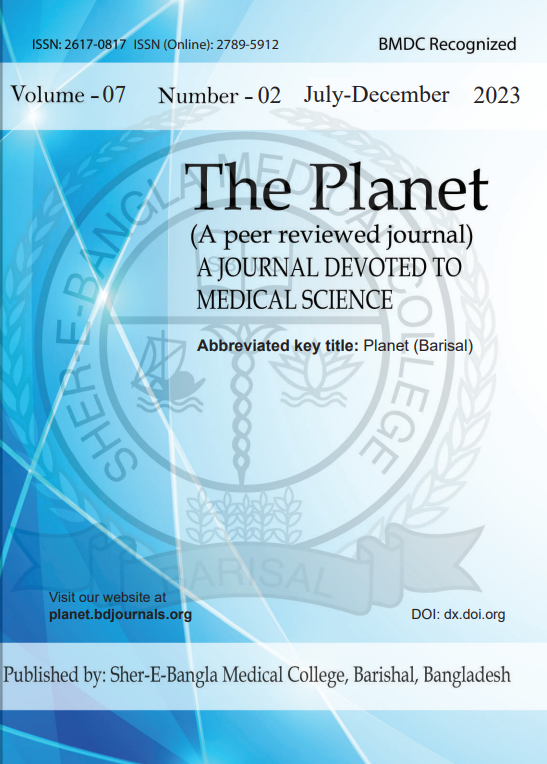Published 14-12-2024
Keywords
- Emergency caesarean section,
- fetal distress,
- maternal complications,
- neonatal outcomes,
- postpartum care
- obstetric intervention ...More
Copyright (c) 2024 The Planet

This work is licensed under a Creative Commons Attribution 4.0 International License.
How to Cite
Abstract
Introduction: Emergency caesarean sections are critical interventions in obstetric care, often necessitated by various maternal and fetal complications. This study aims to identify the primary indications for emergency caesarean sections and assess the associated maternal and neonatal outcomes. Methods & Materials: A hospital based observational analysis was conducted on cases of emergency caesarean sections performed at a tertiary care hospital over a specified period. Data on indications, maternal complications, and neonatal outcomes were collected and analyzed. The study conducted between January 2024 to June 2024. Results: Fetal distress was identified as the leading indication for emergency caesarean sections, accounting for 18% of cases, followed by previous caesarean sections. The incidence of maternal complications, including hemorrhage (20%) and puerperal infections, was notable. While 59% of neonates experienced no complications, prematurity was recorded in 10% of cases, highlighting a significant area of concern. The average hospital stay post-delivery was 9.0 days, indicating the need for thorough monitoring and management of both maternal and neonatal health. Conclusion: The findings underscore the importance of timely interventions and comprehensive postpartum care to reduce maternal and neonatal morbidity. Continuous monitoring and effective management strategies are essential to improve outcomes in emergency obstetric situations.


